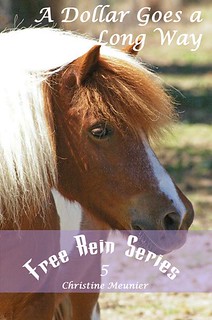 |
| Milton C. Toby photo |
By Milton C. Toby

My plan for this post, until yesterday, was a feel-good piece about the great stories waiting for a writer at Old Friends, a Thoroughbred retirement farm for Thoroughbreds established by Michael Blowen a couple of miles from my home in Georgetown, Kentucky. Inspiration for my award-winning book,
Noor: A Champion Thoroughbred's Unlikely Journey from California to Kentucky,was the untiring effort of Charlotte Farmer to locate an unmarked grave in California where Noor was buried and then figure out a way to move the horse's remains across country to Old Friends.
I'd be happy with half the passion Charlotte has for racing, for horses, and for the history of the sport!
More recently, author Laura Hillenbrand agreed to sponsor Genuine Reward, one of only two live foals produced from Kentucky Derby winner Genuine Risk, at Old Friends. Genuine Reward was standing at stud in Wyoming when he was offered for sale on Craigslist for "$500 or best offer." The 22-year-old horse arrived safe and sound at Old Friends this summer. Here is a
link to a
Blood-Horse article about Blowen, Hillenbrand, and Genuine Reward.
There are many more great stories at Old Friends, enough to satisfy anyone who writes about horses. But that's not the focus of this post. A National Public Radio report on the relationship between football, concussions, and chronic traumatic encephalopathy ("CTE," traumatic brain injury) is.
The numbers about football and CTE are staggering:
- 108 concussions reported this year in the National Football League (these are only the concussions included on NFL injury reports; there almost certainly have been more)
- In one recent study, the brains from 87 of 91 deceased NFL players, including a number of players who died as a result of suicide, showed symptoms of CTE
- In another similar study, 131 of 165 people who played football at any level--professional, college, high school--suffered from CTE
After years of sidestepping the issue, chronicled in the book
League of Denial, the NFL finally acknowledged the connection between concussions and CTE. A feature film based on the book,
Concussion, slams NFL Commissioner Roger Goodell and the league for their obfuscation and inexcusable foot dragging. Despite extensive media coverage of the NFL's bad faith efforts to hide the effects of concussions, professional football remains amazingly popular. And that popularity raises a vexing question for fans of football, for fans of horse sports in general, and for those of us who write about horses.
Is it moral, or ethical, to support (or even watch) an activity such as football, where athletes put themselves at an acknowledged risk for our entertainment? Think gladiators in ancient Rome. It's not a new question. I first came across it in a New York Times ethics column several years ago, and I wrote about it in my equine law blog--
Horses and the Law--at www.thehorse.com. The question is an important one in a sport where athletes make conscious, and maybe informed, choices about the balance between career, money, and injury.
The question is even more problematic when we consider racing and other horse sports where an essential part of the competitive team, the horse, has no choice about its participation in a dangerous and sometimes corrupt sport. Horse racing has a drug problem, more serious than many in the sport's leadership admit, but does that mean we should boycott the game, stay home from the tracks and switch channels to avoid the Kentucky Derby or Breeders Cup broadcasts?
 |
| Bill Straus photo |
As writers, how do we portray racing, or eventing, or rodeo in our books and articles? Are we doing the equine athletes a disservice by not writing about the problems? Do we have an obligation to educate our audience? Do our readers even care?
There are no easy answers, but that doesn't mean we should avoid the questions.
Starting a discussion is the first step.













